
Sketchbook_Confidential
.pdf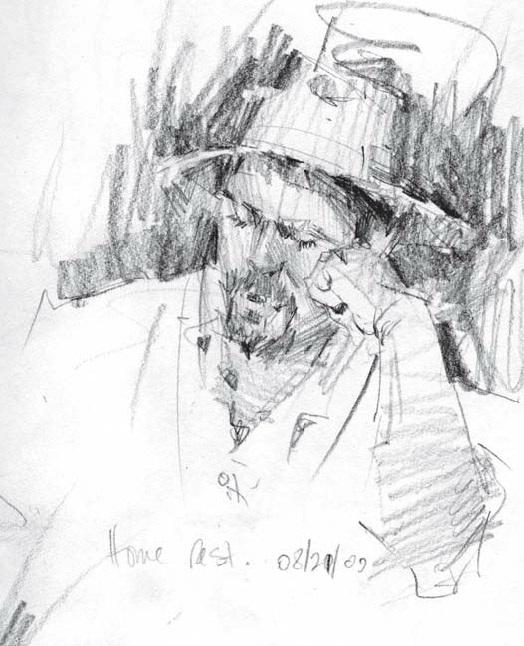
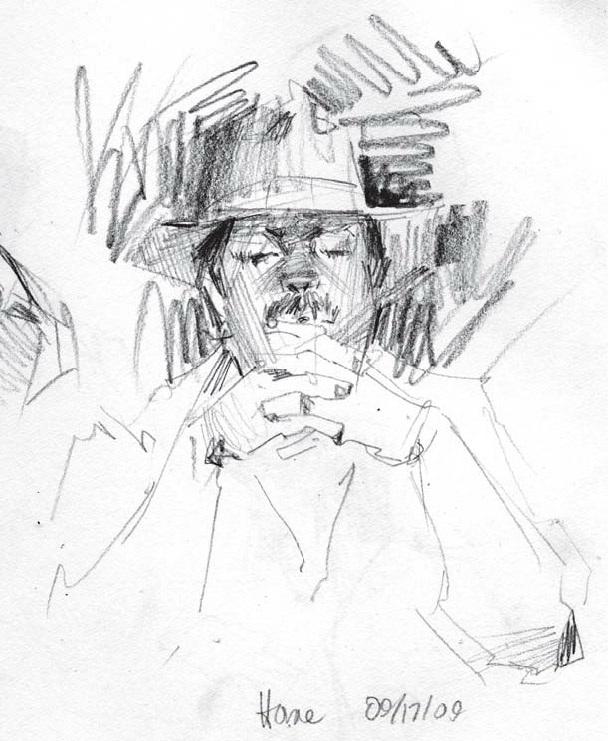

Richard McKinley
A professional painter for almost four decades with over thirty-five years' teaching experience, it's hardly surprising when McKinley says, “Trying to capture a piece of the world around me in paint is something that has consumed my life since I was thirteen.” Passionate about painting outdoors, the artist has earned many accolades for his oils and pastels, among them the honor of being inducted into the Pastel Society of America's Hall of Fame in 2010. A contributing editor for THE PASTEL JOURNAL, McKinley published recently compiled years of his columns and blogs for the
magazine for his book PASTEL POINTERS: TOP SECRETS FOR BEAUTIFUL PAINTINGS.

The inspiration to sketch comes from the intimacy it produces with the subject matter. Instead of quick snap-shots, time is spent looking and analyzing. This leads to a more sensitive interaction and outcome.
Sketching can serve two purposes for me. It can be the beginning step in advance of a painting. This entails a series of thumbnail sketches used to work out composition and value placement. Or it can be a means of artistic expression often done while on exotic
travels. These sketches quickly record my impressions for later reference and inspiration beyond what photography can provide.
Sketching is an attitude for me. It implies that I am working quickly to record information that the camera cannot. For this reason, my sketches are often produced on a variety of surfaces with various mediums. Small thumbnail sketches are usually done with a standard 2B or 3B pencil in a small commercial sketchbook. For composition value studies, Tombow value markers (Dual Brush Pens) are great. They make it easy to quickly mass in large simple shapes of value abstractly. Water-soluble graphite pencils are another choice. When water is applied the graphite becomes like ink. Utilizing a brush makes the transition to paint easier, allowing me to think more like a painter than a draftsman. When sketching for reference, especially when traveling, pen and ink with watercolor washes in a travel watercolor sketchbook is preferred. For larger sketches, often done in studio, I like to use painting surfaces I plan to paint on. This gets me into the flow for the ultimate painting. Pastel surfaces, like Wallis pastel paper and Pastelmat, are common choices.
Sketching is a warm-up for painting. It gets me into the sensitive side of my brain. I like to begin simply with small composition doodles, analyzing the elements of the composition: shape, motion and value-mass. I ask myself, What is it I want to say about this scene? What can I leave out to strengthen that intention? I also remind myself that it is not about a pretty sketch. Sketching is utilitarian for me, and once I begin to worry about how polished it appears, I stray from the purpose of the sketch. To stay loose and true to this purpose, I console myself that I don't have to show anyone what I have done; it is for me.
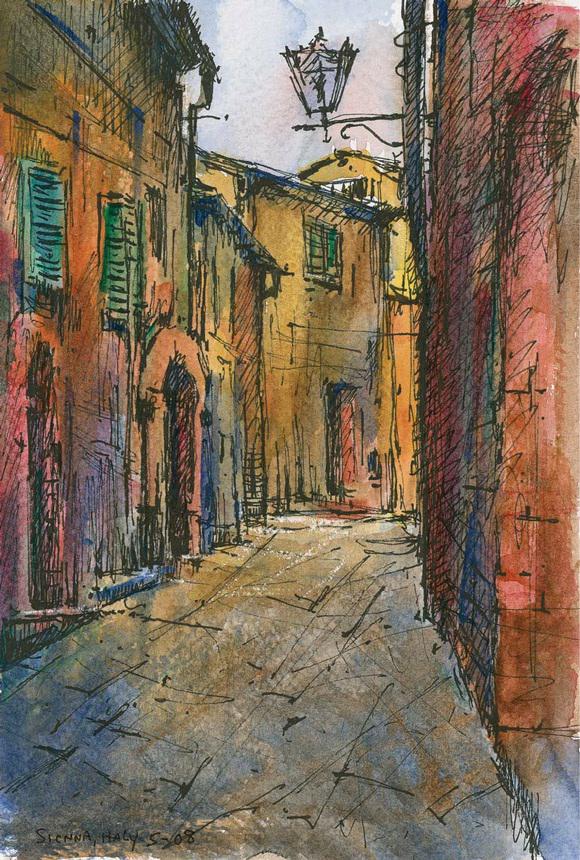
The first marks of a sketch are always anxious. I have formed a mental picture and am now making it literal. A sketch — or a painting, for that matter — is a performance. Stage fright in advance of beginning is common. It is like I can't remember my lines, play the instrument or throw the ball. Once the physical motion begins, intuition takes over and I become calm and focused. It becomes a response to the interplay between the subject
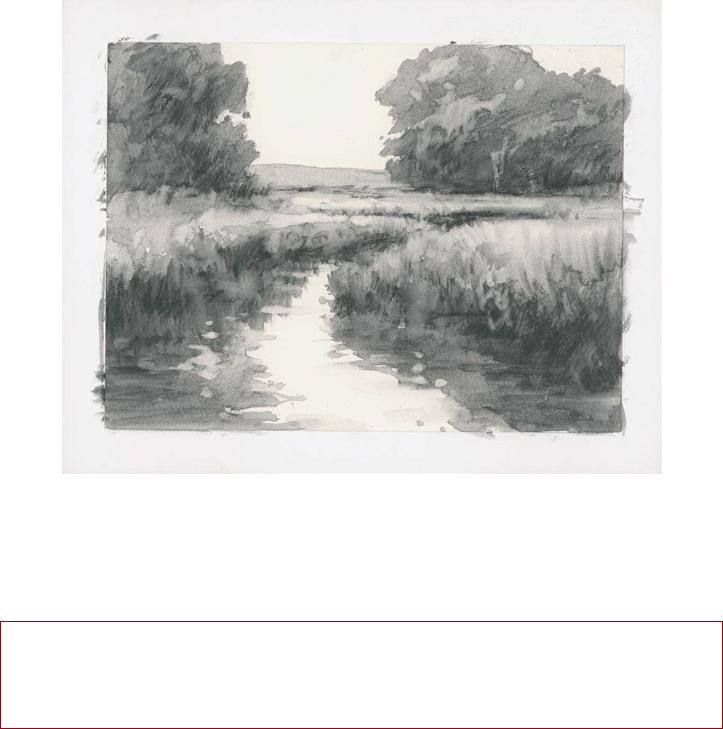
and surface.
Sketching keeps the artistic muscles toned. It reminds me of the fundamental design elements that are the foundation of every good piece of art. It helps me to organize the visual elements of a scene making it easier to relate my intentions to an audience. A simple sketch can solidify a concept. These sketches provide clarity in advance of painting, ultimately producing a stronger, less overworked end result.
Large sketch done with water-soluble graphite pencils on Wallis pastel paper.
The best lesson of sketching is that a little advance preparation can make the journey easier. Life and art are filled with pitfalls. A little preparation can make them less troublesome.
A sketch — or painting, for that matter — is a performance. Stage fright in advance of beginning is common.
The mind works very symbolically. It quickly associates meaning to the flashing symbols before the eyes. Taking time to sketch forces my mind to slow down and become contemplative. As this happens, an unnoticed world comes into focus, making me more
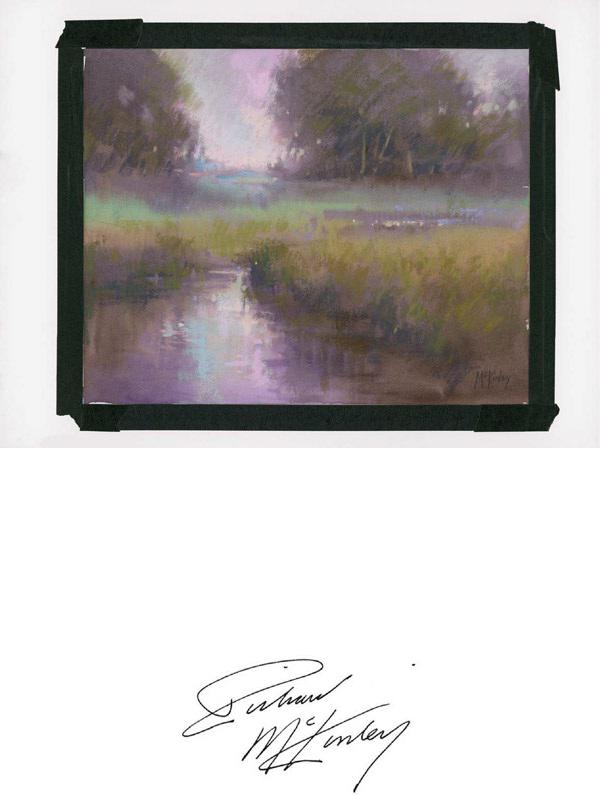
aware and sensitive.
Since the word “sketch” implies looseness, it is easier to let go of the desire to fuss and polish. When I work on paintings that are meant to be important works, it is easy to let that goal get in the way of creative freedom. There is an underlying fear of making a mistake, of the end result not meeting expectations. When sketching, there is nothing to lose, so it is easier to allow intuition to take over.
Pastel sketch in advance of painting.
My sketches are not done with the intention of merely copying them later as a finished painting. They provide more of an artistic warm-up and a way of making thought literal. It is easy to experiment with a sketch. If it doesn't work, I move on to the next attempt. This gets the creative juices flowing. Even when a painting goes in another conceptual direction, I feel more intimate with the subject.
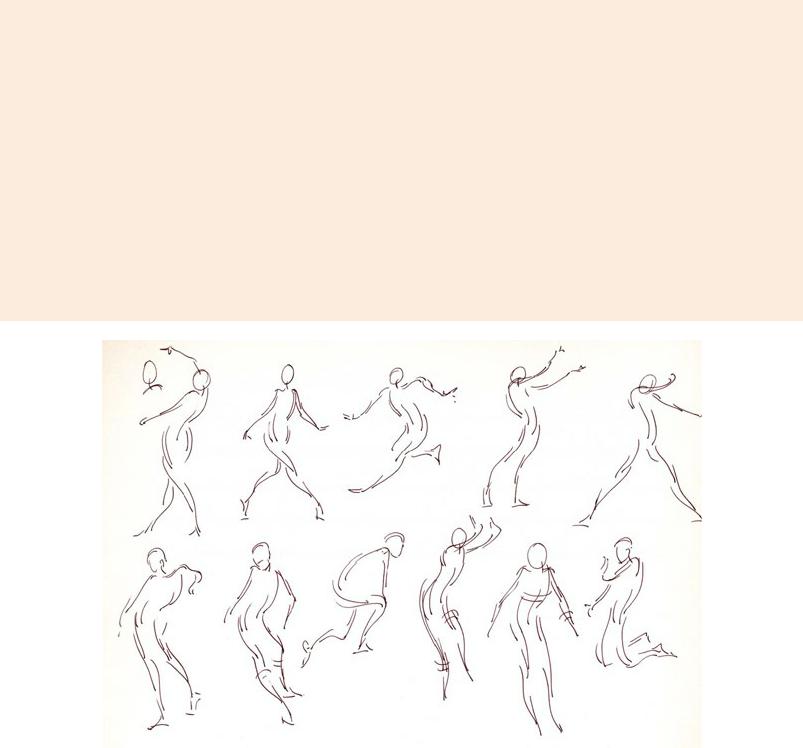
Jeff Mellem
A professional artist and graphic designer, Mellem has designed for magazines, video games and theater and worked in various industries over the last decade. He earned a Bachelor of Fine Arts degree from The California State University, Fullerton, and studied drawing at the American Animation Institute in California. Traditional drawing techniques are the foundation of his work, to develop characters and stories. His book SKETCHING PEOPLE: LIFE DRAWING BASICS was released by North Light Books in 2009.

